Showing 1041–1050 of 1094 results
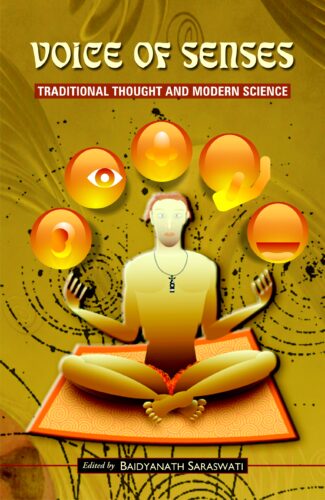
This volume is devoted to a thorough understanding of the concept of senses as interpreted in the ancient Asian traditions with particular reference to Indian religious and philosophical thought. It examines the functions, perception, scientific approach and the recurring cycle of Five Senses in Chinese, Tibetan and Indian philosophy.
This volume is devoted to a thorough understanding of the concept of senses as it has been interpreted in the ancient Asian traditions with particular reference to Indian religious and philosophical thought. It examines the functions of the sense-organs and the perception of them adopting a sociological and scientific approach. The first part of the presentation comments on the recurring cycle of Five Senses in Chinese, Tibetan and Indian philosophy. It takes up ancient knowledge on the senses as can be gained from the Vedas and the Upanishads, the Buddhist Abhidharma text and Jainism, as also from Islamic and Christian philosophies. They relate functioning of the sense-organs to aesthetic perception. Articles in the second part examine ethnic-cultural communities’ responses to senses and attribution of functions to them, as, for instance, the importance attached to the senses by the traditional snake-charmers. They study responses by plant and animal life to their environment and inquire into the biological processes involved in sense perceptions. Modern technology is discussed as imitating the Five Senses. These articles should be of benefit to scholars interested in learning about the different aspects of Indian religious and philosophical perceptions.
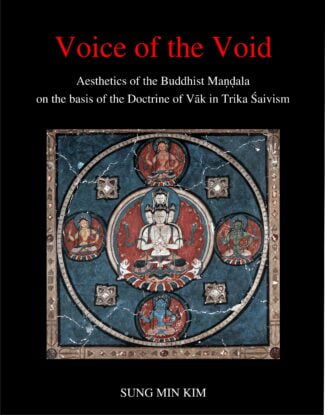
This volume examines how the perceptible form of Buddhist mandalas represents shunya (void), with special reference to the mandalas of Tabo and Alchi. On the basis of the concept of vak (subtle sound) in Trika Shaivism of Kashmir, it investigates where their aesthetic power derives from.
The research undertaken here about Buddhist mandalas is basically designed under the philosophical question how the visible dimensions of forms are related to their invisible contents. The textual sources in reference to Buddhist mandalas teach that the essence of mandalas is shunya (void) and their forms are the reflective images (pratibimba) of shunya. This volume investigates how the colourful form of Buddhist mandalas represents the prime concept of shunya, and what makes these mandalas visually powerful, leaving the impression of ßspiritual enhancementû in the heart of people who do not even know about the Buddhist doctrines.
The mandalas permanently represented in the monastic complexes of Tabo and Alchi in the Western Himalayas have been focused in order to examine a prominent role of visual dimensions of mandalas. In order to comprehend mandalas in the context of Buddhist philosophy, the texts of the Yoga-Tantra class have been looked up. Especially, the references to the tantric visualization-practice throw light on the internal experiences with mandalas.
Considering the fact that the Buddhist mandalas have been developed as a method of Mantrayana, being always combined with mantras and mudras, this volume presents the concept of vak (word, subtle sound, voice) as a key to explain how the ultimate state of shunya and perceptible forms of mandalas are related to each other. The doctrine of vak developed in the tradition of Trika Shaivism in Kashmir provides us with a systematic way to explain the non-dualism between all phenomenal objects and the Supreme Divine. The doctrine of four levels of vak is examined in the book for the purpose of interpreting the aesthetic phenomena and structuring the different levels of meanings of mandalas from the aesthetic perspective. On the basis of the vak theory, the external forms of mandalas have been explored and their visual principles have been technically analysed, in attempt to answer the question: how do the colourful forms of Buddhist mandalas resemble the formless shunya?

This book contains articles that examine the contribution of women saints from India and abroad and discuss the origin of bhakti, the Bhakti Movement, theris, and bhakti/saint poetesses. Their contribution constitutes a rich tradition of devotional discourse in terms of form as well as content.
This volume comprises articles that examine the contribution of women saints from India and abroad as well. The articles discuss the origin of bhakti, the Bhakti Movement, and bhakti/saint poetesses like Rishika Gargi, theris, Andal, Lal Ded, Akka Mahadevi, Mirabai, Gangasati, Tarigonda Vengamamba, Janabai, Bahinabai, Madhabi Dasi, Hildegard of Bingen, and Julian of Norwich from different regions and religions. Their contribution constitutes a rich tradition of devotional discourse in terms of form as well as content and has survived till now in folk and learned traditions. The articles discuss their voices, visions and sufferings physical and psychological and also the way they transcended them and voiced them in their compositions. Their uniqueness lies in their existence at multiple levels social, poetic, religious and spiritual among others. The volume would interest literary, cultural historians and religious scholars as well as general readers.
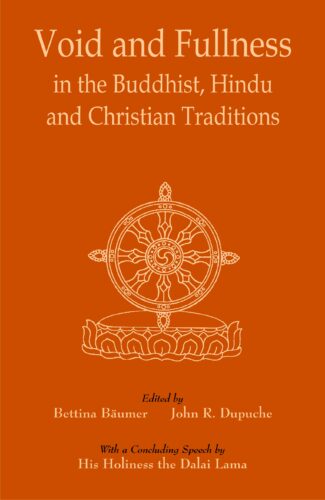
Interreligious dialogue is one of the important ways for overcoming cultural and religious differences and misunderstandings. But it has to reach the depths of the spiritual, philosophical and theological insights of the religious traditions. This volume throws light on concepts of Void (sunya) and Fullness (purna, in Greek pleroma) in the Buddhist, Hindu and Christian traditions.
Interreligious dialogue is one of the important ways for overcoming cultural and religious differences and misunderstandings, and for contributing to world peace. But such a dialogue has to go beyond the social, institutional and purely academic areas: it has to reach the very depths of the spiritual, philosophical and theological insights of the religious traditions. In Buddhism, Hinduism and Christianity such insights are expressed in the apparently opposite, but in reality complementary concepts of Void (shunya) and Fullness (purna, in Greek pleroma). These concepts lead to the respective spiritual experiences and their interpretations in scriptures and philosophies. This volume contains the papers presented at an interreligious seminar at Sarnath, Varanasi, organised by the Abhishiktananda Society, and inspired by the ideas and life of Swami Abhishiktananda (1910-1973). These papers throw light on these fundamental concepts from the different traditions, and are an invitation to dialogue. H.H. the Dalai Lama gave the concluding speech on the importance of interreligious dialogue.

It mainly tries to postulate an alternative explanation to the vratya-phenomenon correlated with the heterodox facets of Indian sovereignty. Thus, the work consistently offers a new historical interpretation of the rise of the so-called orthodox Brahmanic (Shrauta-) culture that is understood as a reform.
This volume stems from the three-year Research Project Traces of a Heterodox Concept of Kingship in Ancient, Medieval and Modern India financed by the Regione Autonoma della Sardegna, developed by Cristina Bignami, Danila Cinellu, Ewa Debicka-Borek, Moreno Dore, Elena Mucciarelli, Chiara Neri and coordinated by Tiziana Pontillo. It mainly tries to postulate an alternative explanation to the vratya-phenomenon correlated with the heterodox facets of Indian sovereignty. Thus, the work consistently offers a new historical interpretation of the rise of the so-called orthodox Brahmanic (Shrauta-) culture that is understood as a reform. Moreover, it resorts to a large collection of ancient, medieval, and modern texts and documents, interpreted by means of philological and anthropological tools. In this manner, the Vratya problem is launched onto a interdisciplinary platform, in order to profit from a broad scenario as far as this issue is concerned.
The first section focuses on the vratya culture, as it can be reconstructed from old (and middle) Indo-Aryan generally marginalized sources, and from medieval and modern documents where this culture seems to have left some traces. The second section seeks to substantiate the polar opposition between orthodox and heterodox sovereignty, of which vratyas appear to be a capital example.
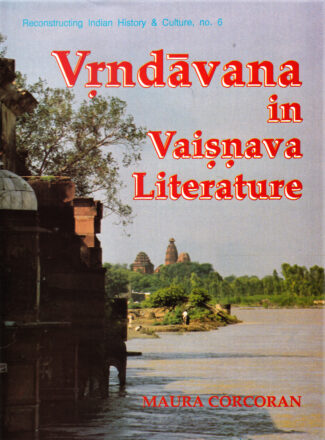
The book explores the essential nature of Vrndavana, analysing various Vaisnava texts mythological, meta-physical, devotional and commentatorial. It identifies a notional sequence of ideas connected with Vrndavana the description of a mythic place, a symbolic place, etc.
A well-known geographical site on the banks of the Yamuna, about 150 kilometers from Delhi, VRINDAVANA is the holiest of the pilgrimages for the worshippers of Krishna. However, in the devotional Sanskrit and Braj Bhasha literatures, another dimension of Vrindavana dominates the picture, i.e., its role as an expression of the divine realm. What, then, is Vrindavana? A terrestrial place of pilgrimage? A mythic locale associated with Krishna and Radha? Or a metaphysical concept symbolizing the celestial space of the eternally-going lila (divine sport)? With sharp focus on these and allied questions, Dr. Corcoran explores afresh the essential nature of Vrindavana, critically analysing the representative texts from the immense corpus of Vaishnava literature of different genres: mythological, metaphysical, devotional and commentatorial. The authors inquiry seeks to identify a notional sequence of ideas connected with Vrindavana: the description of (a) a mythic place, (b) a symbolic place, (c) the geographical town as a centre of pilgrimage. And also looks at other thematically relevant concepts, for instance, avatara (incarnation) and lila (divine sport), underlying the entire understanding of the nature of the divine and the relation of the divine to the material world. The book exhibits a striking departure from modern sources which have, for the most part, concentrated on Vrindavana as a geographical place, glossing over its symbolic and mythic significance.
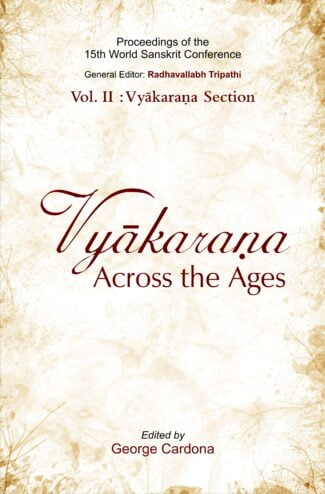
Covering the papers presented during the 15th World Sanskrit Conference, this book deals with Sanskrit grammatical treatises such as Eropean traditions of Sanskrit grammers; relations between terms and their meaning; the derivation of nominal forms in the Sàrasvata system; and the realm of modern Sanskrit literature, among others.
Sanskrit grammatical treatises, not only those of Panini and his successors but also work by Indian scholars representing other streams of grammatical thought, have long held the attention of modern scholars. The present volume contains a selection of the large number of papers presented in the Vyakarana Section of the 15th World Sanskrit Conference held in New Delhi, during 15-20 January 2012.
The scope covered in these papers is wide. The first contribution deals with currents in European traditions of Sanskrit grammars, from early works by missionaries to modern Sanskrit grammars. As could be expected, however, Panini is the centre of attention for most authors, whose contributions nevertheless differ in focus. Several scholars deal with theoretical issues concerning the interpretation and application of Paninian sutras, including points of Sanskrit syntax. The question whether particles (nipata), and preverbs (upasarga) in particular, should be considered independently to signify particular meanings or instead be treated as terms which serve to cosignify meanings assigned to items with which they co-occur is the object of two studies.
One paper treats in detail the relations which can be considered to hold between terms and the meanings they signify, with particular emphasis on what Bhartrihari has to say on this topic. A historically-oriented study deals with attacks on Paninian views by Mimamsakas of Prabhakara Naiyayikas. One scholar contrasts how particular nominal forms are derived in the Sarasvata system in contrast to the Paninian derivations of such forms. The final study in this collection brings us into the realm of modern Sanskrit literature, with a discussion of usage in the prose work Shivarajavijaya of Ambika Dutt Vyas.
Fellow scholars should welcome and profit from the varied studies contained in this volume.

Vyangyavyakhya (interpretation of implied sense), ninth century, is the first performance text in Sanskrit applying dhvani to Bharata’s theatre. The author Kulasekhara deserves a place next to Anandavardhana and Abhinavagupta in the history of Natyasastra studies. The text is published for the first time.
The doctrine of dhvani, expounded by Anandavardhana (ninth century ce) in Kashmir though contested by his contemporaries at home, received sound acclamation in Kerala. A royal dramatist Kulashekhara of the same century applied dhvani to the theatre. His performance text is known as Vyangyavyakhya (VV), meaning interpreting the implied. This was an epoch-making event in the history of Indian theatre. This innovation in performative practices marked a deviation from Bharatas national tradition and laid down the foundation for classical forms like Kutiyattam, Kgrshnanattam, Kathakali and Mohiniyattam. VV today continues to inspire contemporary directors to formulate new interpretative sub-texts for ancient plays. VV, which remained in manuscripts till now, is published for the first time.
As icing on the cake, four eminent scholars K.D. Tripathy, Radhavallabh Tripathi, N.P. Unni and Kavalam Narayana Panikkar delve deep into the aspects of VV as introduction to this book. This volume discusses in detail the Sanskrit theatre until tenth century ce, performance texts of Dhananjayadhvani and Samvaranadhvani, and the developments in the post-Kulashekhara era.
VV should serve as a guide to all practitioners of performing arts, and should entice students, teachers and lovers of Indian performing arts.
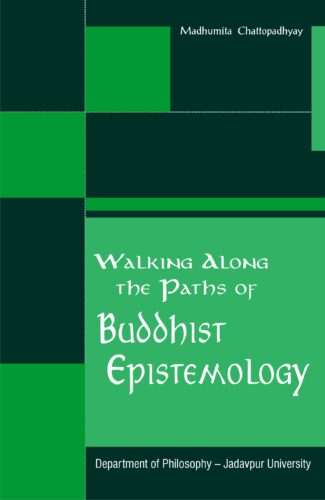
This is a book on Buddhist epistemology dealing with different epistemological topics like the nature of knowledge, validity of knowledge, knowledge of knowledge, perception, erroneous perception, among others. The author has referred to different Sanskrit texts and literature available on these topics.
The monograph highlights the philosophical arguments offered by Buddhist thinkers on different aspects of knowledge. Various aspects of Buddhist epistemology right from the basic question of what the Buddhists mean by knowledge, the varieties of knowledge according to their belief and their explanations of the validity of knowledge are examined. A painstaking work of Prof. Madhumita Chattopadhyay, this study deals with different epistemological topics like the nature of knowledge, validity of knowledge, knowledge of knowledge, perception, erroneous perception, inference and its related issues like ascertainment of vyapti, antarvyapti, prasanganuman and fallacies of inference. The author has referred to many primary sources which include different Sanskrit texts as well as the latest secondary literature available on these topics and discusses the important role of concept of absence and the theory of apoha or negative nominalism as a substitute for universals in Buddhist metaphysics. An attempt is made to explore whether solutions to modern epistemo-logical problems as found in the Western tradition can be provided from the Buddhist perspective in order to show that Buddhist epistemology has a relevant role to play in the area of epistemology itself. The book would interest scholars and students interested in the epistemological and logical aspects of Buddhist philosophy.

It is a comprehensive study of the defence policies, construction of forts, arms and ammunitions, commissariat, the espionage system, the rules of aggression and defence, the technical matters and war ethics, based upon a comparative study with the modern systems, and a thorough comprehension of Sanskrit, Sanskrit sources, and works like Silappadikaram, and Kural.
Differing from the existing studies on the warfare of ancient India; Warfare in Ancient India: In Historical Outline is a comprehensive study of the defence policies, construction of forts, arms and ammunitions, commissariat, the espionage system, the rules of aggression and defence, the technical matters and war ethics, based upon a thorough comprehension of Sanskrit and Sanskritic sources. This being done based on the existing and newly-explored sources. It also analyses the diplomatic and economic factors in aggressive designs, one of the major elements of the political history of early India.
This volume partially deals with the activities of the Indo-Aryans and their continuous struggle for survival against hostile environment in Indus Valley and their expansion towards the east along the major rivers of north India, leading to frequent invasions and attacks. Thus came the warlike traits of some major Vedic deities, ancient battles, arms and armour, chariots, forts, arrays, Jain war canons, and major weapons cited in the Mahabharata, Silappadikaram, Manasollasa, Kural, etc. as the main focus of the book. It also vividly addresses the war policies and tactics enunciated by Kautilya in Arthasastra and Manu in Manu-Smriti, and differentiations in their views on few aspects. The inevitable factors that led to wars survival, and domination and economic exploitation are also well dealt.
The book should enthuse the interests and spirit of all those who are into the study and research of history, warfare and ancient Indian culture mainly from the Vedic viewpoint.
| There are no products |